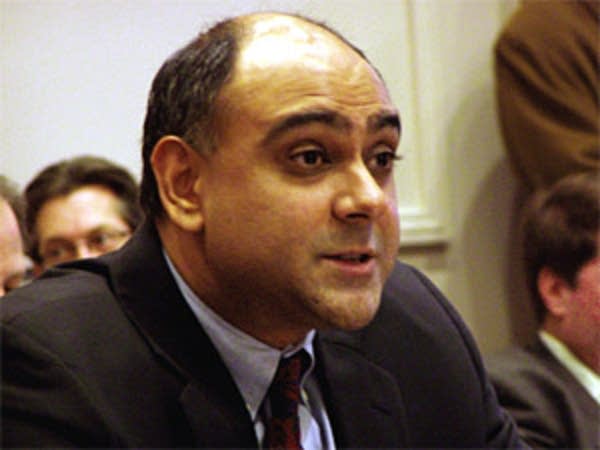Another legislative session over, another ATV law on the books
Go Deeper.
Create an account or log in to save stories.
Like this?
Thanks for liking this story! We have added it to a list of your favorite stories.

Contentious, might be the best word to describe ATV issues the past few years. Minnesota Sen. Satveer Chaudhary (DFL-Fridley) set out to change that. Chaudhary chairs the powerful Environment and Natural Resources Committee and was the architect of this year's newest ATV legislation. By most accounts, the senator was successful in bringing ATV and environmental groups together. Chaudhary says there was a new level of cooperation in St. Paul.
"I think we really achieved a good balance and a good compromise," said Chaudhary. "And most importantly, we created a new tone on the ATV issue from one that was really kind of warlike and hostile between environmental groups and ATV riding groups, to one where there was a dialogue where we seek solutions to actual problems."
The two sides agreed there needed to be a big change in ATV rules. To understand why, you need to go back to 2005, when legislators split the state in two. In the southern two-thirds of Minnesota, ATV riders can only go on trails that are posted with signs saying they're open. But the rules are different north of U.S. Highway 2, where nearly 75 percent of state forest land is located. In those forests, ATVs can go on any existing trail, unless it's posted closed.

That 2005 law created an unintended loophole. It meant that in northern forests, people could legally ride on almost any trail, even on renegade trails that were made illegally. The result in some forests was a spider web of new trails, all legal under the letter of the law.
Turn Up Your Support
MPR News helps you turn down the noise and build shared understanding. Turn up your support for this public resource and keep trusted journalism accessible to all.
This year's new law was intended to fix the problem with a simple requirement; that beginning in June 2009, a DNR-produced map will identify which trails are legal for riders. That requirement was agreed upon by the various interest groups, passed by the Legislature and signed by the governor.
It all seemed like a done deal. But days later DNR officials came forward with a problem. They pointed to hundreds of miles of trails that won't appear on the DNR's new map. They're called "access routes." Some cross over county or private land. These "access routes" connect to hunting land, logging sites or private property. For that reason, the DNR doesn't want to publicize the trails by putting them on a map.
Northern lawmakers pushed to keep those unmapped trails open. Rep. David Dill (DFL-Crane Lake) says local riders have used these lesser known trails for years. He says the new law allows that to continue.

"Basically, what we're talking about are established logging roads, or trails that access private land," said Dill. "Trails that are access routes to areas that have been logged, or cabins that exist on private land but need to go across state land, that have been traditionally used will, as well, be available for use."
Some environmental groups say the eleventh hour change is a step backward. Matt Norton is a forestry and wildlife advocate with the St. Paul-based Minnesota Center for Environmental Advocacy. Norton says the change will be confusing to riders and will make the original mapped trail requirement unenforceable.
"How are those things reconciled? Not too well," Norton said. "The first law says you have to stay on mapped trails and the second law says unless those trails that you're riding are not mapped. It's really sort of, it's not possible to make the two laws fit in a neat way. The second law essentially creates a loophole that swallows the first."
Leaders of Minnesota's largest rider's group say they didn't ask for the change, but they support it. ATV Association of Minnesota President Phill Morud says locals should be allowed continued access to traditional areas. He says he thinks most ATV riders will want to stick to mapped trails. Morud says the new laws need to be given a chance before throwing them out.
"Things have been moving pretty fast for the last quite a few years," said Morud. "Now that we have a little bit more civil tone, let's find out what works and protect the areas that need protecting and move forward from here."
The DNR still needs to finish the process of designating state forest trails that will be open to ATVs. Maps of those trail networks aren't expected for another two years. It's unclear now how many miles of unmapped trails will remain open to riders.





